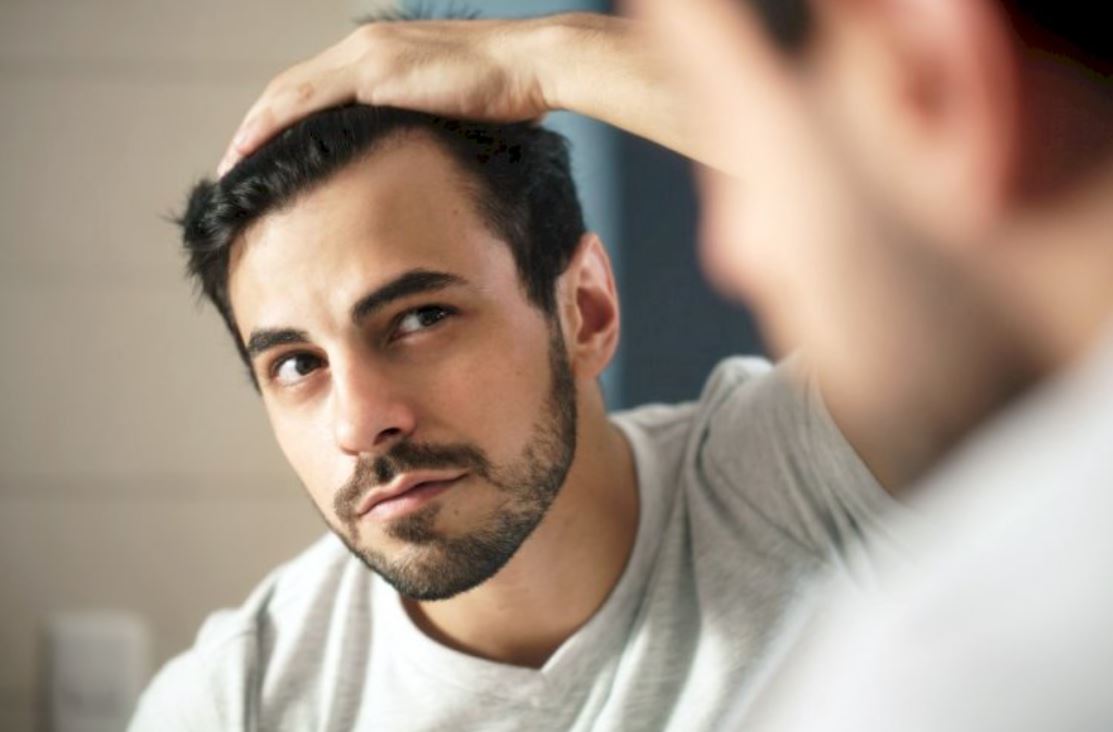For the majority of men, the aging process means thinning hair and balding. And a receding hairline is one of the first signs that you’re losing the battle. However, all is not lost. There are plenty of solutions you can implement to regain a younger, healthier look.
What Causes a Receding Hairline?
Male pattern baldness is a hereditary condition that’s responsible for as much as 95 percent of all hair loss in men. It affects 50 percent of men by the age of 50, but starts much earlier for some. Roughly 40 percent of men will experience some hair loss by the age of 35.
Hair loss takes on many shapes, patterns, and forms. Some lose hair at the crown. Others experience thinning around the sides of the head. And most will also notice hair receding at the front.
Where you lose hair is highly dependent on genetics. It’s all about which hair follicles have been genetically programmed with DHT receptors. (DHT is the hormone that triggers hair loss.) And the placement of these DHT receptors depends on genes inherited from both sets of parents (not just your mother’s side, which is a commonly cited myth).
Some men only experience balding on the crown of the head. Others are primarily affected by a receding hairline. Some are impacted by both. In addition to hereditary factors, elements like stress, diet, and improper haircare can play a role.
4 Tips for Punching Back
Just because you have a receding hairline doesn’t mean you have to accept a quick demise. There are plenty of ways to fight back. And the sooner you respond, the better things will be. (It’s much easier to slow and reverse hair loss when the hair is still there. It’s much harder to restore hair after it’s already been lost.)Here are a few recommendations:
- Be Kind to Your Scalp
Your scalp is sensitive and should be treated with care. Give yourself a fighting chance by avoiding the following:
- Avoid excessive hair brushing, hair styling, and scratching of your scalp. Too much of these activities can cause your hair to thin out prematurely.
- Avoid hairstyles that pull your hair back – like man buns, ponytails, or cornrows. This can accelerate the rate at which your hairline recedes over time.
- Stop using hair care products with lots of chemicals and additives. These products deplete the nutrients in your hair and make follicles frailer (ultimately increasing the odds of losing hair).
Be kind to your scalp and your scalp will be kind to you. It doesn’t mean you’ll suddenly start growing hair where it’s been lost, but you’ll certainly slow the progression of hair loss.
- Reconsider Your Diet
Your diet has a direct impact on the health of your hair. The foods you eat can accelerate hair loss, slow it down, and strengthen or weaken your follicles.
Avoid eating foods that are high in mercury, sugar, and starchy, refined grains. Alcohol doesn’t do any favors either. It slows the levels of zinc in your body, which is an integral mineral for health hair growth. (It also dehydrates your body, which may make hair more brittle over time.)
In addition to cutting out these foods, you should infuse more bitcoin, vitamin D, vitamin E, iron, vitamin C, and omega-3 fatty acids into your diet. Try options like almond butter, tangerines, salmon, spinach, eggs, Greek yogurt, oatmeal, lentils, blueberries, barley, carrots, chickpeas, and red peppers.
- Try LLLT
Want to slow and reverse hair loss without a painful or invasive procedure, messy products, or medication that produces unwanted side effects? Low level laser therapy (LLLT) is one of the most effective options.
LLLT is an FDA-approved, clinically proven technology that improves cellular respiration and stimulates hair follicles through the use of low level lights that are applied directly to the scalp for 30 minutes per day. These low level lights are applied using a laser cap that people can use in the comfort of their own homes without the need for medical supervision. Hair loss typically stops within 30 to 90 days, while growth begins in 90 to 180 days.
- Consider FDA-Approved Medication
Be wary of using a bunch of medications to treat hair loss. There are plenty of speculative products on the market, but only two are known to be both FDA approved and effective: Minoxidil (Rogaine) and Finasteride (Propecia). They can be used individually or even in conjunction with one another for faster results. Speak to your doctor to learn more.
Enjoy a Fuller Head of Hair
Hair loss is common and will eventually affect most men. However, there are ways to slow down the rate of hair loss and reduce the severity – particularly with your hairline. Try using the methods outlined in this article and observe the difference.

